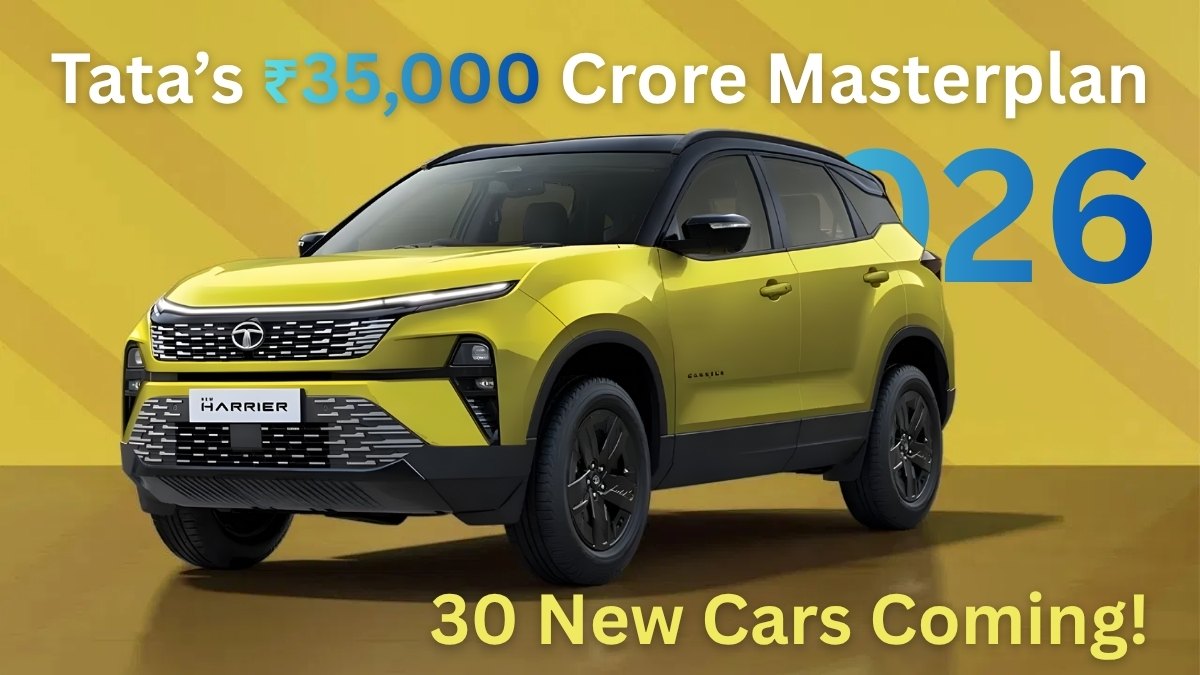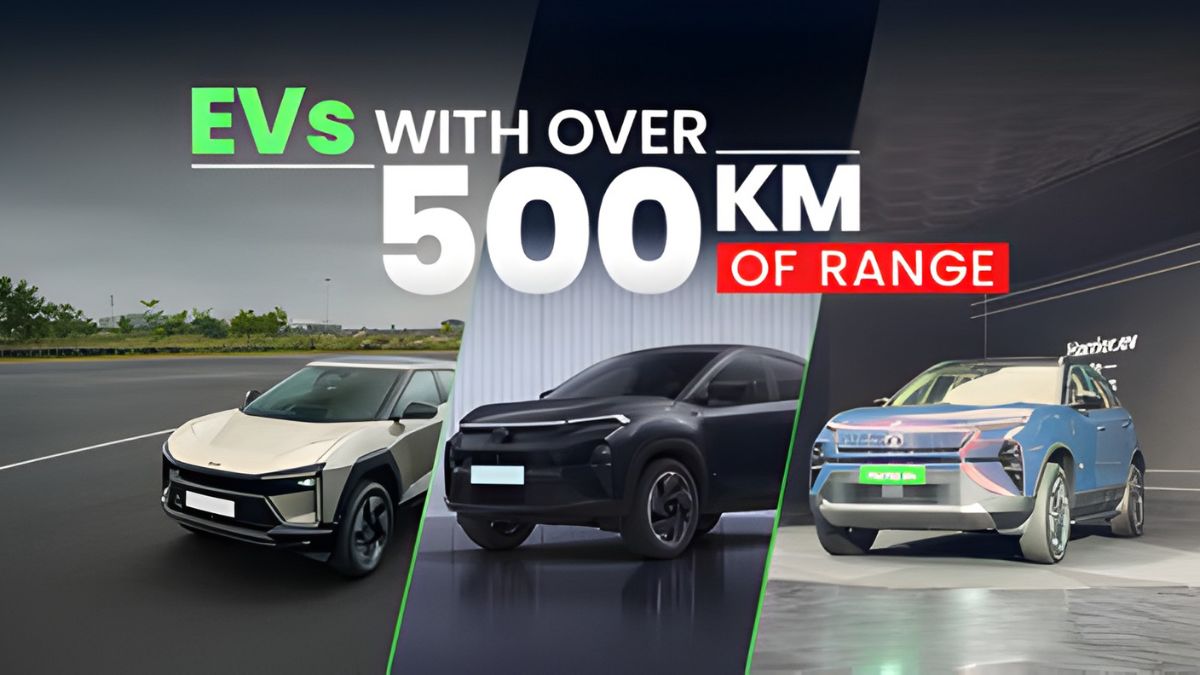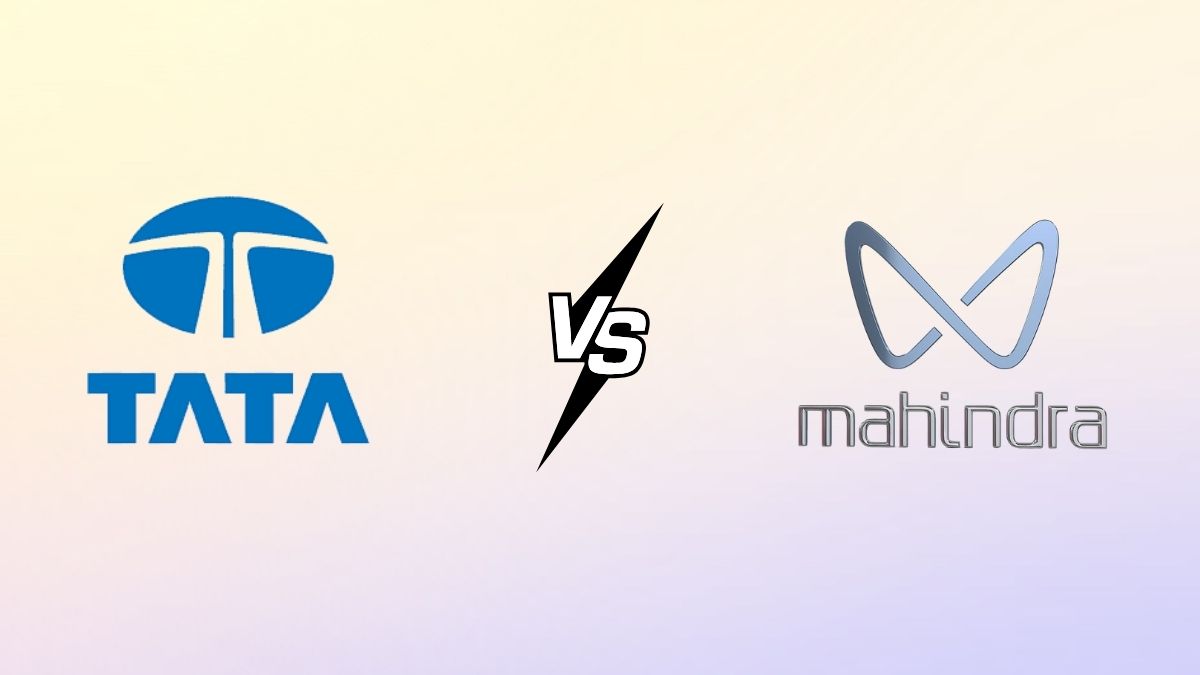Tata’s ₹35,000 Crore Masterplan: 30 New Cars Coming!
- Cars
- 17 Nov, 2025

Indian automotive major Tata Motors has announced a bold and ambitious strategy that aims to reshape its future in the rapidly evolving mobility landscape. Dubbed the “₹35,000 Crore Masterplan”, this initiative plans to invest around ₹33,000–35,000 crore over the next five years and launch approximately 30 new models spanning electric vehicles (EVs), hybrids and internal‐combustion engine (ICE) cars.
With India’s auto market evolving fast—driven by electrification, connectivity, platform innovation and changing consumer expectations—Tata’s masterplan signals its ambition not just to stay competitive, but to lead. This article unpacks what the plan involves, why it matters, how it affects Indian car buyers, and whether you should pay attention.
What the Plan Involves
Here are the core elements of the masterplan:
- The investment capex is roughly ₹33,000–35,000 crore earmarked for its passenger vehicle business (including EVs) over the next five years.
- Tata aims to launch about 30 models by around FY 2030. This includes seven all-new nameplates and about 23 product refreshes or facelifts of existing vehicles.
- The portfolio will expand: the number of nameplates is set to increase from current ~8 to ~15 across ICE, EV and hybrid powertrains.
- Segment focus: While Tata has strong models already (e.g., Nexon, Punch), the plan targets new segments such as sub-4 m compact SUVs, urban EVs, premium SUVs, hybrids and “software-defined vehicles”.
- EV business gets serious funding: A chunk of that investment will go into next-gen EV platforms, software/SDV capabilities and manufacturing readiness for electric mobility.
- Market share targets: Tata is looking to reach a ~16 % passenger vehicle market share by FY27 and potentially 18-20 % by FY30 in the Indian market.
Why It Matters for India & Car Buyers
- Electrification push: As India continues to push toward cleaner mobility, Tata’s investment sends a strong signal that it is aligning with policy shifts, infrastructure build-out and consumer adoption of EVs.
- More choice for buyers: With 30 new models coming, including multiple body types and powertrains, consumers will have greater choice—whether they want budget city cars, premium SUVs or full EVs.
- Upgraded tech & freshness: Many of the refreshes and new models will include platform upgrades, better connectivity, new features, improved efficiency and EV versions. For buyers this means keeping up with modern expectations.
- Resale & value proposition: A strong backing from the manufacturer and a large roadmap tends to improve long-term value for buyers—models that are refreshed and supported may hold value better.
- Competitive pressure: As Tata intensifies competition, rivals will respond. That typically means better deals, more innovation, and faster rollout of features for consumers.
Why Choose a Tata Car Now?
If you're in the market for a new vehicle, here are some compelling reasons to consider Tata based on this masterplan:
✔ Confidence in brand roadmap – Tata’s big investment shows commitment to future segments and technologies, reducing risk of model stagnation.
✔ Access to next-gen tech – With planned EVs, hybrids and refreshed lineups you’ll likely benefit from newer features sooner.
✔ Growing EV ecosystem – If you’re targeting an EV purchase, Tata’s roadmap indicates stronger focus on electric models, which may give you a head start.
✔ Better choice across budget – With expansion into compact, sub-4 m, lifestyle SUVs and premium segments, Tata aims to cover a wider price band, increasing chances of finding a model that fits your budget and requirements.
✔ Potential value retention – Strong manufacturer support and continuous refresh could mean fewer obsolete models and better resale outlook.
Conclusion
Tata’s ₹35,000 Crore Masterplan: 30 New Cars Coming! is more than just a headline—it’s a strategic push by one of India’s largest carmakers to take leadership in a changing mobility world. For car buyers, this translates into more options, better technology and a stronger brand commitment. That said, the plan is rolled out over several years, and actual product execution, pricing, availability and charging/servicing infrastructure (for EVs) will determine how meaningful the benefits truly are. If you are planning a car purchase in the next one to five years, keep Tata’s roadmap in mind—it could offer considerable upside. But as always, match the model to your budget, usage, and future plans rather than chasing headlines alone.
FAQs
Q1: What exactly does Tata’s ₹35,000 crore investment cover?
It covers the company’s passenger vehicle business in India (including ICE, hybrid and EV segments) over the next five years, covering product launches (30 models), technology upgrades and platform development.
Q2: When will these new models start arriving?
Some launches are expected in the near term (next 12-24 months) and others over the next few years up to FY30. For example, some reports mention upcoming compact EVs and sub-4 m SUVs in 2025-26.
Q3: Are all 30 new models going to be EVs?
No. The 30 model count includes a mix of all-new nameplates (which may span EVs, ICE and hybrids) plus ~23 refreshes of existing models. So not all will be EVs.
Q4: How does this benefit me as a buyer now?
You may benefit in a few ways: better upcoming models to choose from, possibly newer tech features even in existing models, sheer competition improving value and deals. Also, if you’re EV-inclined, Tata’s focus signals more EV options.
Q5: Should I wait for their new models instead of buying now?
It depends. If your need is immediate, you may not want to wait. But if you’re flexible and able to wait for upcoming models (especially for EVs or premium features) then waiting could give you access to newer technology and refreshed design. Also keep in mind waiting can mean delays, or old models losing value.
Latest Car News


500 KM Range Cars Are Here — But Are They Actually Worth Your Money?

The End of Fuel Cars? New Govt Policy Changes Everything!

5G + AI-Powered Smart Cars Set to Grow Rapidly in India

2026 Safety Norms in India: New Rules for Cars & Two-Wheelers

Petrol vs Electric Cars: Which Is the Smarter Buy in 2026?

Maruti vs Tata vs Hyundai: Which SUV Is the Best Family Car in 2026?

Best Cars Under ₹10 Lakh in 2026

New Skoda Slavia Colors and Variants to Launch in 2026

Top 10 Most Fuel-Efficient Petrol Cars of 2026

Upcoming Budget SUVs Under ₹10 Lakh Launching in 2026














